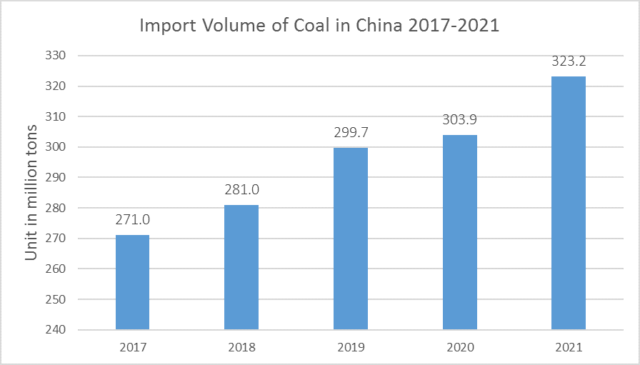Description
China is the largest coal producer and consumer. The huge coal consumption in China encourages foreign coal producers to expand their production capacity. In addition, overseas coal mines are mostly opencast ones, which makes it easy to increase production. However, coal production in China is restricted by environmental protection policies and other factors.
In recent years, some small and medium-sized coal mines had to cut or even stop production because their environmental protection facilities failed to meet standards. Meanwhile, the rising mining costs have made the coal prices in China higher than the international coal prices. For example, in 2019, the average price of imported coal was only US$78 per ton, about 10% lower than that of domestic coal.
According to CRI’s analysis, the logistics costs for imported coal are very low because imported coal mostly enters China by sea. While the logistics costs for domestic coal are far higher because the prices of refined oil are more expensive in China than in other parts of the world, and the expressway tolls are excessively high. Therefore, China imports a large quantity of coal every year.
China’s coal imports rose from 204.06 million tons in 2015 to 299.67 million tons in 2019. In 2020, due to the outbreak of COVID-19 and the deterioration of relations between China and Australia, China’s coal imports have shown a downward trend. In 2021, China’s coal imports amounted to approximately 323.21 million tons, a year-on-year increase of 6.6%.

Coal imports are classified into anthracite, coking coal, other coal, other bituminous coal and lignite. The first three types of coal are used for thermal power generation and collectively called as steam coal in China. China’s coal imports are dominated by steam coal that has a low average price.
According to CRI, coal import can bring the following benefits to China: (1) Appropriate amount of coal imports can suppress the price fluctuations and speculation on China’s coal market so that the downstream industries can maintain stable production and operation; and (2) the import of high-quality coking coal that China lacks can promote the development of China’s coke and metal smelting industries.
According to CRI’s prediction, if the COVID-19 epidemic is relieved in 2022, China’s coal imports will increase in 2023-2032. Although China has reduced its coal imports from Australia, it will look for coal from other countries as an alternative. If the COVID-19 epidemic continues in 2023, it is expected that China’s coal imports will continue to decline in 2023 and will not resume growth until 2024.
Topics covered:
- China’s Coal Import Status and Major Sources in 2018-2022
- What is the Impact of COVID-19 on China’s Coal Import?
- Which Companies are the Major Players in China’s Coal Import Market and What are their Competitive Benchmarks?
- Key Drivers and Market Opportunities in China’s Coal Import
- What are the Key Drivers, Challenges, and Opportunities for China’s Coal Import during 2023-2032?
- What is the Expected Revenue of China’s Coal Import during 2023-2032?
- What are the Strategies Adopted by the Key Players in the Market to Increase Their Market Share in the Industry?
- What are the Competitive Advantages of the Major Players in China’s Coal Import Market?
- Which Segment of China’s Coal Import is Expected to Dominate the Market in 2032?
- What are the Major Adverse Factors Facing China’s Coal Import?



Reviews
There are no reviews yet.